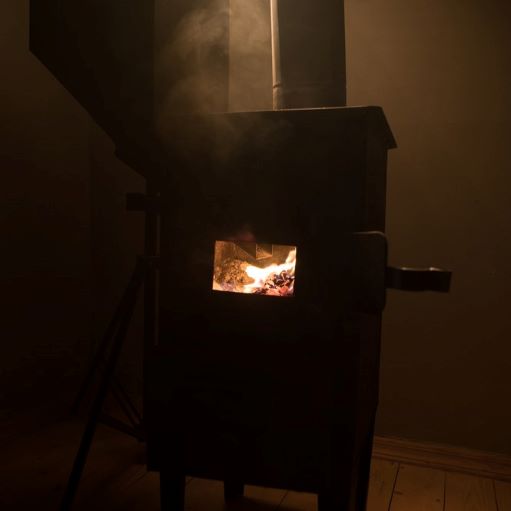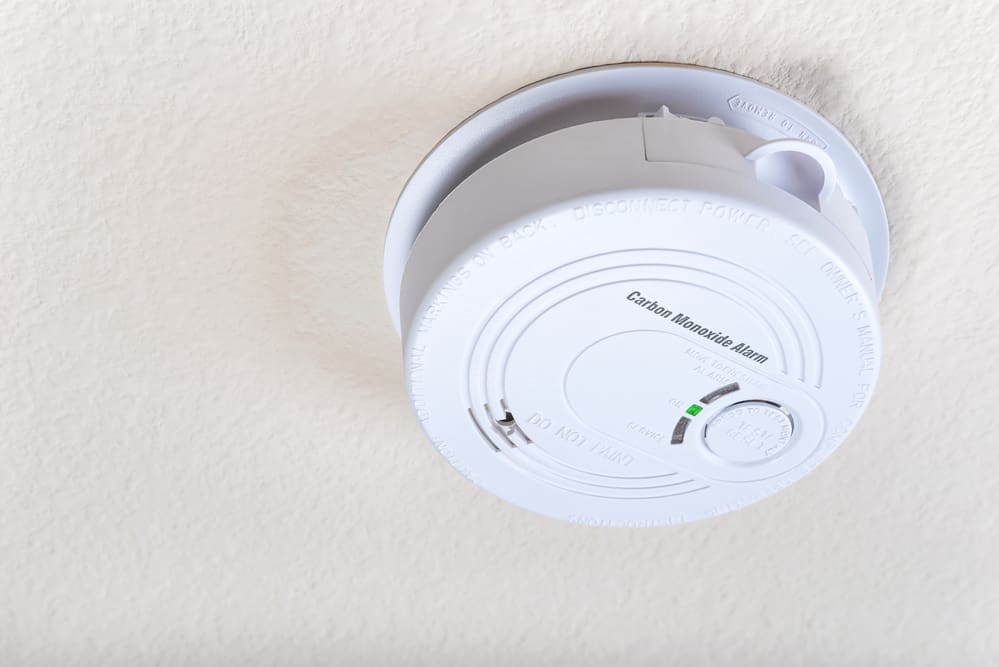Temperatures are dropping. Wondering if your old gas furnace is plotting your demise? Or has an HVAC technician warned you of the dangers of an old furnace and the need for an immediate furnace installation? Are you really getting the full story? Are old furnaces dangerous?
No. An old furnace is no more dangerous than a new furnace as long as it’s maintained properly. Both new and old furnaces have their own safety issues. Even the high end variable speed furnaces.
But if you want your furnace to run safely, there are three things you need to do.
Three Ways ANY Furnace Can Be Dangerous
Fire hazards
According to the National Fire Protection Association, heating appliance fires have been the second leading cause of home fires, and nearly half of all home heating fires occurred during the three months of winter.
One of the most common reasons for fires that you can prevent is the placement of combustible materials near the furnace. Things like paints, gasoline, paper, or clothing should not be kept near a heating system.
It’s best not to have any of these items in in the same room but at the very least leave at least 3 feet between combustible materials and any type of heating equipment.
This danger can depend on the type of furnace in your home. While SOME modern furnaces have a sealed combustion chamber that will help prevent this kind of fire hazard, it doesn’t remove the possibility completely.
Again, the best way to protect your house and family is to be mindful of what materials are in your furnace room.
Dangerous Gas leaks
It’s important to emphasize that natural gas isn’t harmful when it is installed and used correctly. But if there were to be leaks, the resulting effects could be very dangerous. Natural gas is flammable, and there’s a risk of fire and explosion if a leak occurs around an ignition source.
To help detect a problem, utility companies add a harmless gas called mercaptan to give natural gas a rotten eggs smell.
Since natural gas furnaces use natural gas as fuel, there are many points within the equipment where a gas leak could occur. Again, whether you have an old or modern furnace, the danger is nearly the same.
If you do smell gas, call your utility company or a high quality heating and air conditioning contractor as quickly as possible. And if the smell is REALLY bad, treat it like a fire in your house…get out of your home, get to a neighbors house and call 911 or emergency services.
Carbon monoxide poisoning
Most homeowners are not aware of the toxic effect carbon monoxide (CO) has on their indoor air quality. Because of this they do not take the necessary precautions to prevent this health threat.
Carbon monoxide is a toxic gas that can be produced by your furnace if it is not working properly.
Every burning appliance makes a small amount of CO. Normally this is exhausted safely out of your home. But a furnace that is not burning properly has the potential to make large amounts of CO.
Once a furnace is making dangerous levels of CO it may continue to heat your home normally. This combined with a cracked heat exchanger is a perfect storm.
Heat exchangers are the heart of a gas furnace. As the name implies, it’s where the heat from the gases is exchanged to the air passing over it. But this heat exchange must happen with out the gases and air having direct contact. Once a heat exchanger has a crack or opening, the heated gas (and CO) can enter into the air stream and spread throughout your home.
A natural gas furnace making CO doesn’t mean that in has a cracked heat exchanger. It could be a symptom of it or it could just mean that the burners need to be cleaned. But if the heat exchanger is cracked then it’s time for a furnace replacement.
A carbon monoxide leak can have a harmful effect on your health. It is especially dangerous if your family has young children or older ones with compromised heart health.
A sign that you have been exposed to carbon monoxide poisoning, includes experiencing sudden flu like symptoms. Headache, dizziness, nausea, and vomiting are common. If you experience any of these symptoms, get out of the house and call 911.
To prevent carbon monoxide poisoning, install detectors on every floor and have your furnace inspected and serviced regularly by a qualified technician every heating season.
One Danger Of Old Furnaces
In one respect, modern energy efficient furnaces have one safety advantage over an older furnace.
Energy efficient furnaces have the ability to sense if there is a blockage preventing exhaust gases from leaving the home properly.

Like was mentioned before, the exhaust gases can be dangerous and must be removed from the home. Older furnaces vent into the chimney and use a natural draft to accomplish this. But they do not have any way to detect if this draft is working properly.
If any type of obstruction blocked the chimney, the old furnace would continue to run and exhaust gases, including CO, could build up within the home. A new furnace would shut down to prevent this danger.
This isn’t to say that’s the reason you should install a new furnace. They have their dangers as well. In fact, in my experience, I’ve seen far more modern furnaces with carbon monoxide and heat exchanger problems than older furnaces.
Prevent Dangers With Your Home Heating System
There are 2 main ways you can prevent dangerous situations with your furnace.
Annual Maintenance for Your HVAC System
Regular maintenance is the key to discovering problems and staying safe.
All furnace manufacturers recommend an annual maintenance with a qualified professional. Most warranties even state that problems with the equipment due to lack of regular maintenance will not be covered.
During these annual trips, technicians see the little things before they get big. This reason alone is enough to keep these maintenance cycles constant.
Many, if not most, of emergency furnace breakdowns and dangerous conditions are caused by the lack of professional maintenance throughout the years. So performing regular furnace maintenance is a method of extending the lifespan of your heating system for many years. While a new furnace can save on energy bills, it’s easier to do when you’re ready for the replacement rather than an emergency situation.
Preserving a regular maintenance appointment in your schedule is just as easy as making sure you keep your medical appointments such as dentist or doctor visits because lets face it — both you and your heating unit rely on each other to function at their best.
Regular heating equipment maintenance will also reduce the risk of your heating system failing and leaving you in a uncomfortable house during the cold winter months.
Carbon Monoxide Detectors for Your Home
Keep your family safe and install a carbon monoxide detector today if you don’t have one.
Carbon monoxide detectors come equipped with the technology to be able to detect the presence of carbon monoxide in your home. Some models are able to read out the level of CO they detect, while others can simply alert you audibly if a dangerous concentration of carbon monoxide is detected.

Carbon monoxide alarm on the ceiling
Because carbon monoxide is slightly lighter than air detectors should be placed on a wall about 5 feet above the floor or on the ceiling. Do not place a detector right next to or over a fireplace or any flame-producing appliance.
Each floor needs a separate detector. If using a single carbon monoxide detector, place it near where you sleep and make sure the alarm is loud enough to wake you up.
Also, be mindful of the expiration of your CO detector and replace it when it’s time. Most detectors have a 5 year lifespan.
Conclusion
Just because it’s old doesn’t mean it’s not safe, but you do need to be aware of certain things in order to prevent any issues. Whether your current furnace is old or new, keeping it well maintained has tremendous value. Longer lifespan, better air quality and most importantly, a safer home.
